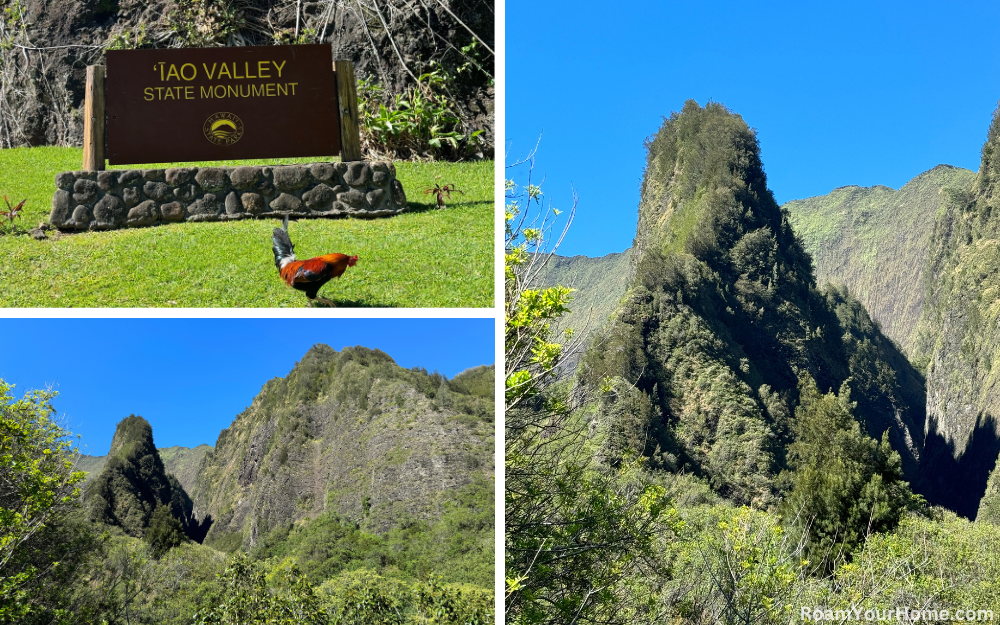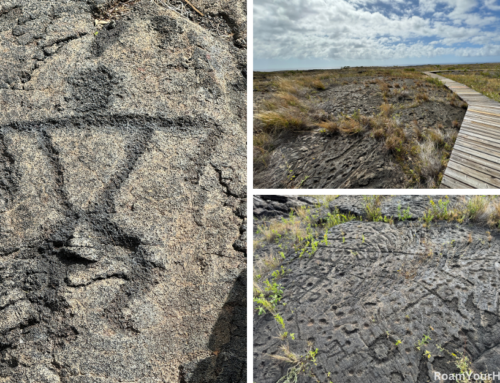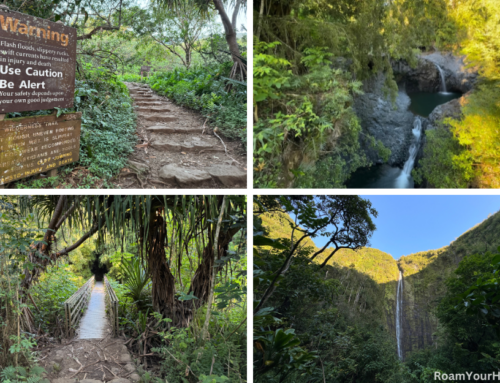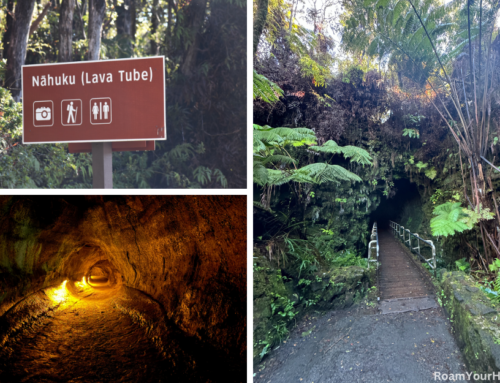
ʻĪao Valley State Monument: Visitor’s Guide
ʻĪao Valley State Monument is one of Hawaii’s most breathtaking natural wonders. It’s located in the lush West Maui Mountains and is famous for its rich history, stunning scenery, and excellent hiking trails.
Getting to ʻĪao Valley
ʻĪao Valley State Monument is just west of Wailuku, about a 20-minute from Kahului Airport. The drive itself is a scenic adventure, taking you through dense tropical landscapes and offering glimpses of Maui’s striking mountain ranges.
We pulled into the fairly large parking lot on a weekend afternoon during Maui’s off-season. To my surprise, the parking lot was completely full. We had to circle a few times before finding a spot. Getting out of the car, we read a few signs and then headed straight for the reason we came to the park! View of the famous ʻĪao Needle.
ʻĪao Needle Lookout Trail
We hiked up the short ʻĪao Needle Lookout Trail. It’s only a 0.6-mile paved trail and is an easy walk to the lookout point. Along the way, we passed through lush tropical gardens filled with native Hawaiian plants.
From here, we were treated to incredible views of the towering ʻĪao Needle and panoramic views of the valley. My wife and I hung out at the viewing area for about 15 minutes while many people came and went.
The Iconic ʻĪao Needle
The ʻĪao Needle is a famous Hawaiian landmark. The densely vegetation-covered peak rises dramatically 1,200 fee from the valley floor. This natural rock formation, created by erosion over thousands of years, is one of Maui’s most photographed sites.
Cultural and Historical Significance
Beyond its natural beauty, ʻĪao Valley holds profound cultural and historical importance. The traditional Hawaiian name for the 2,250-foot high ʻĪao Needle is Kūka‘emoku. This peak is known as the phallic stone of Kanaloa, the Hawaiian god of the ocean.
It was the site of the Battle of Kepaniwai in June of 1790. where King Kamehameha I and his forces fought the Maui army in his quest to unify the Hawaiian Islands. The battle was fierce; legend says the stream ran red with blood. Today, the valley is considered a sacred place, and visitors are encouraged to treat the land with respect.
Stream and Garden Areas
After hiking to the lookout, we explored the valley floor. The ʻĪao Stream flows through the park and is very scenic. Nearby, the park features an ethnobotanical garden showcasing plants important to Hawaiian culture, such as taro, banana, and ti leaves.
Tips for Visiting ʻĪao Valley State Monument
Entrance Fee & Hours: The park charges a small entrance and parking fee for non-residents. It is open daily.
Dress for Weather: ʻĪao Valley is often misty and experiences frequent rain showers. Wear comfortable hiking shoes and bring a rain jacket.
Be Respectful: As a sacred place, visitors should remain on designated trails, avoid swimming in restricted areas, and be mindful of Hawaiian cultural traditions.
Get There Early: The park can get crowded, especially during peak hours. Visiting in the morning offers a quieter experience and better lighting for photography. We learned this lesson the hard way when we arrived in the busy afternoon.
How Long to Visit: We spent about an hour and a half visiting. You could easily spend more or less if you just walk to the needle viewpoint.
ʻĪao Valley State Monument is more than just a scenic spot—it’s a place where history, culture, and natural beauty come together and very much worth a visit if you are in the area.






